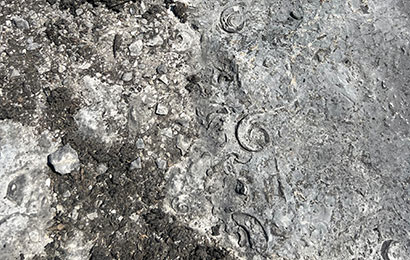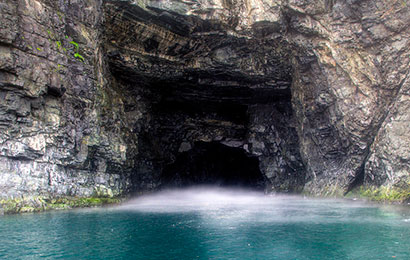Limestone habitats are home to a variety of rare and specialized species, each facing unique conservation challenges—and offering important opportunities for conservation. These distinctive habitats include:
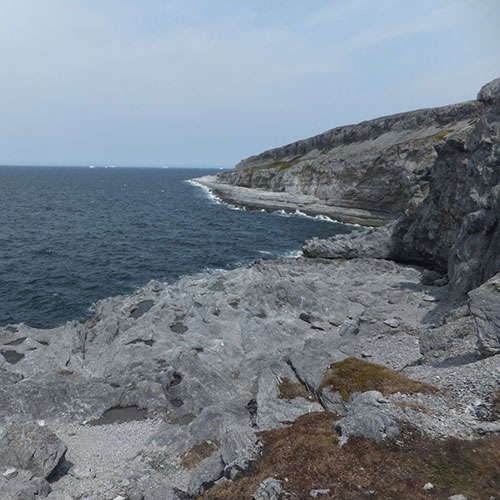
Shorelines & Islands
Characterized by cooler microclimates, tides, and seawater spray, these areas support salt-tolerant (halophyte) plants, abundant invertebrates, and serve as critical stopover sites for migrating shorebirds.

Limestone Barrens & Outcrops
These rugged, open areas host arctic-alpine type ecosystems rarely found at such low latitudes. The soils are low in nutrients and high in calcium, providing a unique habitat for endemic and highly specialized at-risk species.
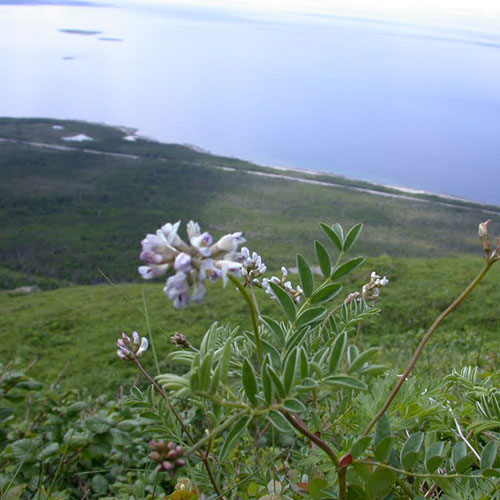
Highlands
The forest of the lowlands transitions to the stunted wind beaten tuckamore that gives way to the rocky plateaus of the Highlands. With harsher conditions and limited soil development, highland limestone areas support a more restricted but unique group of plant and animal species.
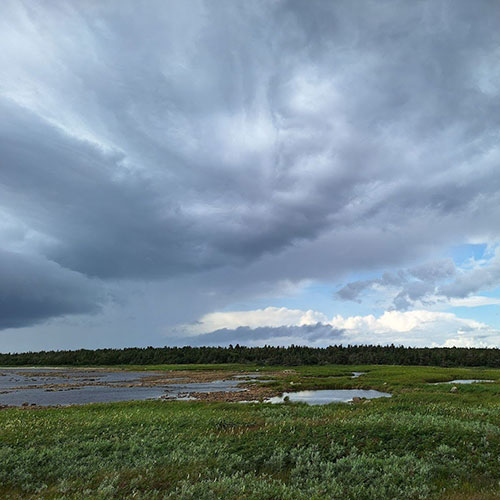
Limestone Wetlands, Waterbodies, and Woodlands
These habitats offer diverse and rich ecosystems, from calcareous fens and marshes to coniferous forests, all shaped by the cold climate, strong winds, and underlying limestone geology and hydrology.
Geologic Features of the Limestone Landscapes
The Limestone Landscapes region is named for the limestone and dolomitic limestone that underlies this part of the province. The limestone accumulated as sediment on the bottom of a sea that covered this area about 450,000,000••• years ago. Over millions of years, the calcium-rich ocean mud hardened into limestone—including fossils of some of the animals and plants that once lived here. Some of the limestone has become dolomitized (part of the calcium was replaced by magnesium), and this dolomitic limestone resists erosion much better than ordinary limestone
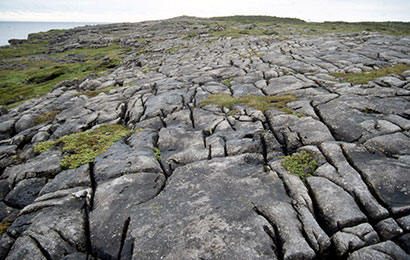
Limestone Pavement
As limy ocean mud hardens into limestone, water is squeezed out, and the rock shrinks slightly, creating a network of cracks. Rainwater is slightly acidic, and plants produce acids as they die and become part of the soil.
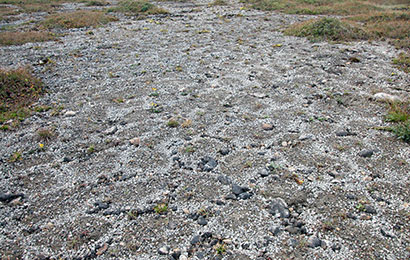
Frost Boils
Hundreds of years of annual freeze and thaw cycles sort limestone gravels into patterns. The smallest are muddy frost boils that look like the surface of a boiling pot of water.


